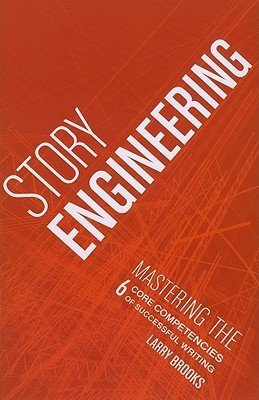
02 May Book Review of Story Engineering
Review of Story Engineering by Larry Brooks
As a self-confessed “plotter,” the allure of Larry Brooks’s Story Engineering was irresistible to me. I’ve always had a penchant for story structures—be it in novels, movies, or even articles. The skeletal frameworks that underpin great storytelling fuel my creativity, so you can imagine my excitement upon diving into a book that promised to illuminate the mechanics behind crafting compelling narratives. However, as enticing as this journey sounded, my experience with Brooks’s work turned out to be a bit of a mixed bag.
Brooks aims to dissect storytelling into digestible components, and indeed, he introduces six essential competencies for writers. I found his insights on character development particularly intriguing; they felt like shining pearls lost in a sea of rather chaotic exposition. Unfortunately, these moments of clarity were often buried beneath pages filled with convoluted metaphors and heavy-handed rhetoric.
My initial enthusiasm slowly morphed into disillusionment as I navigated through the book. Brooks’s tone is akin to that of an evangelist, fervently proclaiming the superiority of his methods while casting a shadow over those who dare to diverge. I found myself feeling chastised rather than inspired, as if the art of writing was a strict regimen I had to embrace 100%—or else. It’s a harsh environment for a creative spirit; my inner artist felt cornered, questioning its own worthiness against Brooks’s rigid benchmarks.
Moreover, the book reads with disjointed pacing. Brooks’s insistence on building hype for the concepts can make it feel like an uphill battle. I often wondered if I had inadvertently stepped into an endless loop of reiteration, leaving me with an unsatisfactory sense of confusion rather than the clarity I sought. The structural chaos threw me off enough that much of the information that could have been invaluable instead felt jumbled and mishandled.
While there are some nuggets of wisdom here, the overall negativity and rigidity made my reading experience feel laborious. Reflecting on my month-long endeavor through nearly three hundred pages, I couldn’t shake the analogy of a "drunken priest"—a memorable phrase that encapsulated how I felt about Brooks’s unapologetic delivery. The good elements were present, yet they were obscured by a heavy cloud of condescension and a pervasive fear that if I deviated even slightly from the prescribed path, my writing would perish.
So, who would I recommend Story Engineering to? Perhaps fellow writers who thrive under strict structures and can find solace in Brooks’s unwavering rules. If you’re someone who yearns to dissect the creative process down to the last detail, you might find something valuable here, albeit with a healthy dose of patience. However, for the more free-spirited creatives like myself, I’d suggest approaching this book with caution—ready to sift through the confounding noise for those golden insights.
In the end, while I walked away with a few helpful techniques tucked under my belt, the overall tone and structure left me feeling less than inspired. My expectations met a wall of disappointment, and at this stage, I’m still left pondering if structure should empower creativity or stifle it.









